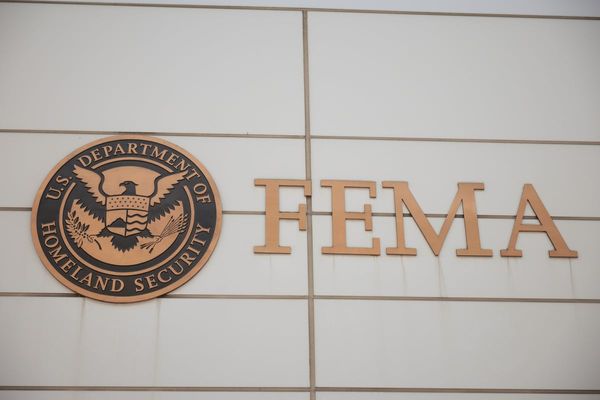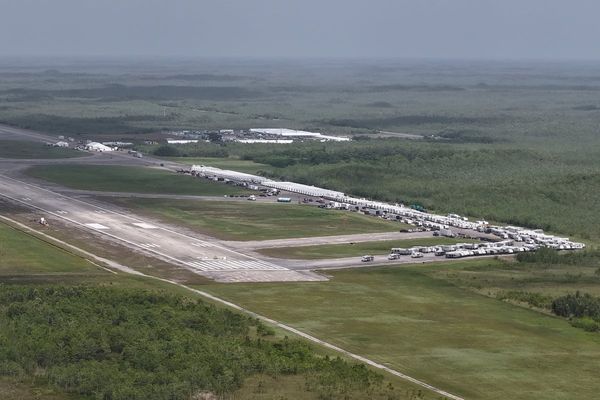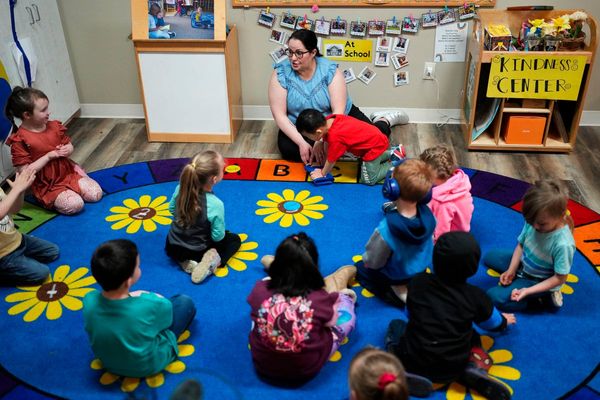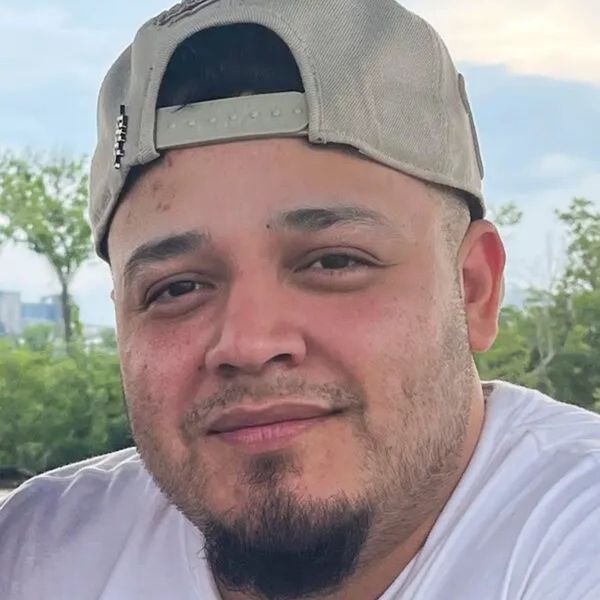Scientists say critically endangered hawksbill turtles that nest in Western Australia seem "quite safe" from the deadly tortoiseshell trade, but they are monitoring them as the illegal market expands.
Christine Madden Hof, the marine species program manager for WWF (World Wide Fund for Nature), said the tortoiseshell trade had decimated the hawksbill turtle population around the world.
Over the past 150 years, an estimated 9 million hawksbill turtles have been harvested for the trade.Despite the trade being illegal, the hawksbill's brown-and-yellow-patterned shell is very much sought after for making jewellery and ornaments.
It is estimated there are now only 6,700 nesting females left in the Indian and Pacific oceans.
Scott Whiting, the principal research scientist at the Department of Biodiversity, Conservation and Attractions, took part in a research project to track hawksbill turtles in Western Australia, to find out if the animals were in danger of being killed for their shells.
Australia is one of the last remaining havens for the critically endangered turtles, which are found along the tropical coasts of northern and eastern Australia.
Rosemary Island, off the coast of the Pilbara, is one of the largest nesting locations for the species in the world.
Scientists track turtles
A paper based on the tracking program, Movements and distribution of hawksbill turtles in the Eastern Indian Ocean, examined data collected from 42 satellite trackers that were glued to turtles' backs at six rookeries, five in WA and one in Timor-Leste.
As scientists tracked the turtles to their foraging areas, it was found most remained in Western Australian waters.
Dr Whiting said a number of new foraging areas had been discovered during the satellite tracking process, which could help with the conservation effort to protect the turtles.
The hawksbills that nest in Western Australia are not only shallow foragers, they also utilise deep reefs offshore.
"There is a portion, when they first hatch and leave the beach, that go out into the open ocean … for five or 10 years," Dr Whiting said.
"We don't really have jurisdiction over them in that period but for these other really big parts of their lives it is not like they're going to another country and falling foul to threats and fishing or commercial harvests or things like that.
Dr Whiting said it was a different story for the hawksbill turtles that nested in Queensland.
Those turtles often travelled to the Solomon Islands, Papua New Guinea and Vanuatu, where they were at risk of being harvested, he said.
History of the tortoiseshell trade
The tortoiseshell trade has operated for hundreds of years, with evidence that residents from Indonesia made annual visits to northern Australia from the mid 1700s to the early 1900s to harvest hawksbill turtles.
The international commercial trade of hawksbill turtles was banned in 1977.
Japan did not agree to abide by the trade ban until 1994 and still allows the manufacturing and trade of tortoiseshell, using stockpiles that existed before the ban came into effect.
Ms Madden Hof said while the tortoiseshell trade was very much an underground market, it still operated and posed a threat to endangered species like the hawksbill.
"Exactly how they're operating is something we need renewed focus on to really track where this trade is, who's involved and what's happening."
Illegal tortoiseshell trade ramps up
Dr Whiting said the global tortoiseshell trade had escalated.
"So we do have some of these traffic lines of trade which are going out of the Pacific and going out of Africa into these other markets."
Another way scientists are trying to locate where the biggest threat of harvesting is, is the Surrender Your Shell campaign, a joint initiative by the Australian Museum, WWF and Royal Caribbean International.
The project was run over six months and encouraged people to send in any tortoiseshell products they owned so they could undergo DNA testing.
Dr Greta Frankham, a wildlife forensic scientist at the Australian Museum, is now extracting DNA from the 178 items sent in to identify what population the turtles came from.
Dr Frankham hoped to have those answers in the next six months.
While the deadline for sending in tortoiseshell jewellery and ornaments to be DNA-tested has now passed, anyone with such items is urged to surrender them to the government.
If you or your family have tortoiseshell in your possession, please contact the Triage and Wildlife Section of the Department of Agriculture, Water and Environment on 1800 110 395.
The Department will arrange for you to surrender your tortoiseshell products.







